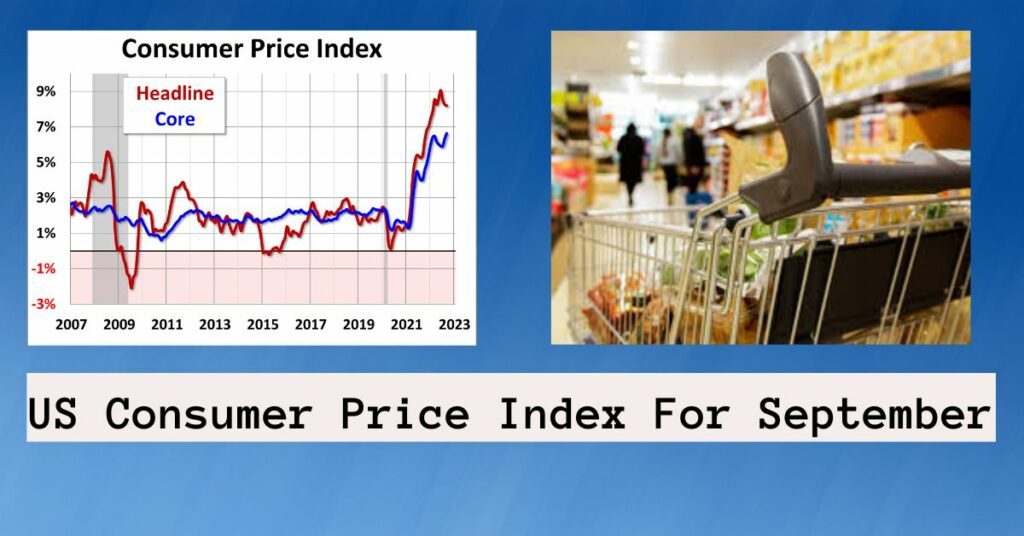As inflationary pressures continued to weigh on the U.S. economy in September, prices for a wide range of goods and services paid by consumers rose more than anticipated. According to the Bureau of Labor Statistics, the consumer price index rose 0.4% month over month, which is higher than the 0.3% increase predicted by Dow Jones.
So-called headline inflation rose 8.2% year over year, down from nearly 9% in June but still near the highest levels since the early 1980s. Core CPI, which strips out the effects of food and energy price volatility, surged 0.6% in the month, beating the 0.4% increase predicted by Dow Jones. The 6.6% year-over-year increase in core inflation was the largest such increase since August 1982.
You can also check
- Twenty-Eight People Were Killed And Dozens More Were Trapped In A Mine Explosion In Turkey.
- Three People Are Being Held Because Of A Boat Accident In Cambodia That Killed 11 People.
Year-Over-Year Change In The Consumer Price Index
Stock market futures dropped and Treasury yields rose as traders anticipated more aggressive interest rate hikes from the Federal Reserve in response to the report. The Dow Jones Industrial Average recovered from its early morning losses and was up over 800 points by 1:30 p.m. ET.
According to Michelle Meyer, chief U.S. economist at the Mastercard Economics Institute, “the Federal Reserve has made it very clear they’re committed to price stability, committed to reducing the inflationary pressures.” If inflation surprises to the upside, policymakers will feel pressure to demonstrate their commitment by raising interest rates and slowing the economy’s underlying growth.
The headline number was inflated by yet another precipitous increase in the cost of food. It was the same 0.8% increase in the food index in September as it had been in August, and it was 11.2% higher than it had been a year earlier. This increase partially compensated for the decrease in fuel prices (4.9%) that contributed to the 2.1% decrease in overall energy costs.
According to AAA, the price of a gallon of regular gasoline has increased by nearly 20 cents since last month due to rising energy costs. Housing expenses, which are closely monitored because they account for a third of CPI, increased by 0.7% in the most recent month and by 6.6% in the most recent year.
The transportation sector also saw significant growth, with increases of 1.9% month over month and 14.6% year over year. In September, costs associated with providing healthcare increased by 1%. Workers’ average hourly earnings fell 0.1% for the month when adjusted for inflation and are down 3% from a year ago, which is more bad news in light of the rising costs, as reported in a separate BLS release.
Despite the Federal Reserve’s best efforts to keep inflation under control, the rate of price increases continues to rise. Since March, the federal reserve has increased benchmark interest rates by three full percentage points. Traders have assigned a 98% chance that the Fed will raise rates by 0.75 percentage points at their upcoming meeting on November 1st and 2nd, and this is likely to be cemented by the CPI data released on Thursday.
Futures have priced in a 62% probability of a fifth consecutive hike after inflation data, which would be a three-quarters-point increase. Although there have been setbacks in several key areas that policymakers are monitoring, inflation has increased. Used car prices dropped 1.1%, and clothing prices dropped 0.3%.
Egg prices even fell, decreasing by 3.5% month-over-month despite being up 30.5% from a year ago. But after a string of monthly drops, airfares increased again, this time by 0.8% month-over-month and by 42.9% annually. On Friday, the Commerce Department and the Census Bureau will release September’s retail sales report, which may shed light on how much the price increases have hurt consumers.
Without accounting for inflation, the data is forecast to show a monthly increase of 0.3%, and no change when auto sales are excluded. Economic analyst for Mastercard, Meyer, says that despite rising prices, consumer spending is holding strong. The fact that “consumers have had very strong purchasing power” is a major contributor to inflation’s high rate, she argued.
You can also check
- Who Killed Jeffrey Dahmer In Prison: Why Did Christopher Scarver Kill Him?
- Rapper JayDaYoungan Shot Dead In Bogalusa: Shot And Killed In Home Town
Even as prices rise, consumers are still making purchases, making it harder for the Federal Reserve to achieve its goal of rebalancing the economy. For renters, falling home prices will trickle down to their bills, resulting in lower inflation numbers overall, Meyer noted. Remaining stimulus funds from Covid-related spending and a resilient labor market have helped maintain consumer spending even as the economy has slowed significantly.
The unemployment rate dropped to 3.5% in September, matching its record low set in late 1969, and nonfarm payrolls increased by 263,000. The number of people filing for unemployment benefits during the week ending October 8 was 228,000, an increase of 9,000 from the previous week, the Labor Department reported on Thursday. That’s a good sign that layoffs are relatively low, though it was only slightly higher than the 225,000 prediction.
Final Lines:

